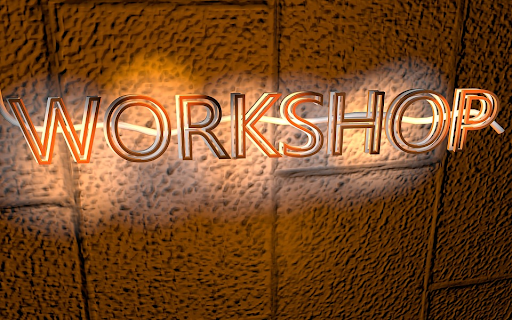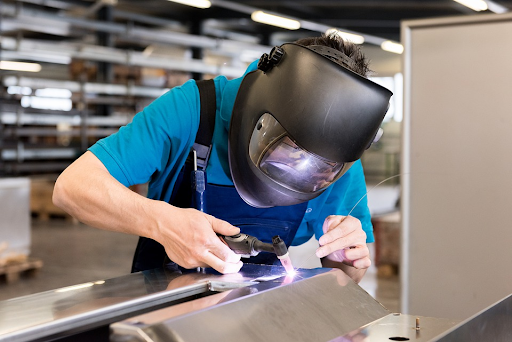
 Loading... Please wait...
Loading... Please wait...Save Money. Grow Your Own!
Fast Plain Box Shipping.
We ship to the US & Canada.
Posted on 11th Apr 2022

It's no secret that a well-lit workspace is important for productivity. Not only does good lighting make it easier to see what you're doing, but it can also help to reduce fatigue and eye strain. This is especially true when working with power tools or doing other tasks that require precise handiwork. So, what are some things you can do to get better lighting in your workshop? Here are six tips to get you started.
One of the best ways to improve your workshop lighting is to switch to LED bulbs. Besides being more energy-efficient than traditional incandescent bulbs, one of the reasons LEDs are a popular choice of lighting for shop fitouts is that they are typically brightest and last longer. While it's pretty obvious why the brightness is a positive thing - you don't have to strain your eyes as much to see what you're doing - the long lifespan is also a big plus. You won't have to replace your bulbs nearly as often, which means fewer trips to the store (or clicks of the mouse) and more time spent working on your projects.
Additionally, LED lights emit very little heat. This can be a big advantage in the summer months when the temperature in your workshop is already quite high.
If you really want to up your workshop lighting game, use multiple light sources. This can help to eliminate shadows and ensure that every corner of the room is well-lit. While how many lights you'll have and where you'll place them will heavily depend on your workshop layout, there are some general rules you can follow. For starters, you want to have a light source near each door and window.
You also want to have task lighting placed above any workbenches or countertops where you do most of your work. In addition, it's a good idea to have some general overhead lighting that can be used as needed. Finally, if you have a lot of small tools or parts, consider getting some under-cabinet lighting to help you see better when reaching into drawers or looking for something on a shelf.
Installing dimmers in your workshop can be a huge help when it comes to getting the perfect lighting for any task. With dimmers, you can easily adjust the brightness of the lights to suit your needs. This can be especially helpful when working on delicate projects that require a lot of precision. If the light is too bright, it can be difficult to see what you're doing.
But if it's too dim, you may find yourself straining your eyes more than necessary. By being able to adjust the light level, you can find that perfect balance that makes work easier and less taxing on your eyes. It can also help to reduce glare and hotspots.
Where you place your lights can be just as important as what type of bulbs you use. When planning your lighting, be sure to take into account things like where the shadows fall and how the light will bounce off of different surfaces. You may need to experiment a bit to find the best placement for your particular space, but it's worth taking the time to get it right. Not only will you be able to see better, but you'll also avoid creating glare or hotspots that can make it difficult to work.
For some tasks, you'll want the light to be directly pointed at what you're doing. For others, indirect lighting may work better. Bouncing the light off the ceiling, for instance, can help to reduce eye strain.
When shopping for light bulbs, you'll notice that they come in different "temperatures." The color temperature of a light bulb is measured in Kelvin and is represented by a number followed by the letter "K." The lower the number, the warmer the light. For example, an incandescent bulb has a color temperature of around 2700K, while a LED bulb can range anywhere from 3000K to 6000K. So, what does this have to do with workshop lighting?
Well, the color temperature of the light can affect how easy it is to see. Warm light is easier on the eyes and can help to reduce eye strain, while cold light is better for tasks that require a lot of precision. If you're not sure what color temperature you need, try out a few different types of bulbs and see which one works best for you - or just have a mix of different temperatures to use as needed.
Finally, don't forget to choose the right fixtures for your workshop lighting. The type of fixture you use will depend on things like the layout of your space and the types of bulbs you want to use. Besides that, you also want to make sure that the fixtures come with shades that can help to direct the light where you need it most. Of course, opting for a bare bulb option has its advantages - as it can provide even lighting throughout the room. However, apart from using it for overhead lighting, you may want to stick to fixtures with shades for the task and general lighting.

These 6 tips can help you get better workshop lighting that is more efficient and easier on the eyes. By using LEDs, multiple light sources, dimmers, and the right fixtures, you can create a well-lit space that is perfect for any task. And by considering the color temperature of the light bulbs you use, you can ensure that you have the perfect mix of warm and cold light to suit your needs.